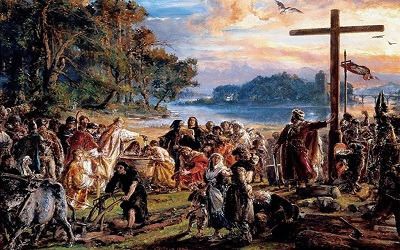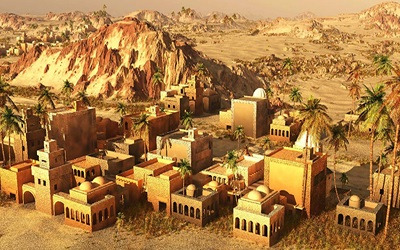#physiolatry
Text

Joseph Stella, “The Virgin” (1926)
2 notes
·
View notes
Photo

Japanese Mythology & Deities
- Intro -
Kami (literally means "gods" in Japanese) are the unseen spiritual power of nature that are venerated in the religion of Shinto.
Shinto means the laws of nature that are so excellent that they cannot be known by human knowledge, and this has been used as an appropriate name for the "Way of God" of Japan's unique folk religion.
If this is the case, the Japanese word "kami" also means "spiritual power of the natural world," which is immeasurably superior to what humans can understand.
In ancient times, the Japanese sensed that in nature and natural phenomena dwelt a spiritual power that was beyond human comprehension.
In other words, people used to know that everything in nature - mountains, oceans, lakes, rivers, grass, trees, rocks and stones, or snakes, wolves and foxes - as well as natural phenomena such as thunder, earthquakes, wind, fire and rain - have their own mysterious and mysterious spiritual powers and laws.
Although we now know scientifically about natural phenomena such as earthquakes, lightning strikes, volcanoes, windstorms, torrential rains, and tsunamis, the foundation of the Japanese people's belief in "kami" still lies largely in a sense of awe of nature.
日本神話と神様たち
- はじめに -
神(かみ)とは、神道の宗教で崇められている目に見えない自然の霊威のことである。
神道とは「人知でははかり知ることのできないほどすぐれた自然界の法則」との意味であり、それが日本固有の民族宗教の「神の道」の名前にふさわしいものとして用いられてきた。
これが事実ならば、和語の「かみ」にも人知でははかりしれないほどすぐれた自然界の霊威という意味があったことになる。
古代の日本人は、大自然や自然現象のなかに、人知でははかり知れないほどすぐれた霊威が宿っていることを感じとっていたのである。
つまり山・海・湖・川・草・木・岩・石、あるいは蛇・狼・狐などといった自然界に存在するすべてのもの、そして雷・地震・風・火・雨などの自然現象のなかに霊妙不可思議な霊威と法則があることを人々は知っていたのである。
現在では、地震・落雷・火山・暴風・豪雨・津波などの自然現象を科学的に知ることができるようになったけれども、日本人の「かみ」信仰の基礎には、依然として大自然に対する畏怖の念が大きく横たわっている。
#japanese gods#shinto#nature worship#nature physiolatry#shintoism#folk religion#kami#princess mononoke#神#自然崇拝#spiritual power#power of nature
74 notes
·
View notes
Text
Can religion be logical 2
Role of religion was also to operate large societies
Click here to previous part of this article
One of the roles of religion was to eliminate the uncertainty and insecurity from human life and many rules were fixed for it so that systemic operation could be determined in organized religions which further resulted into ‘Code of Hammurabi‘, ‘Manusmriti‘ and ‘Shara‘.
And if we talk about that period, then religion or rather superstition according to the modern era was initiated as an experiment which was intended to frighten people to keep them under control. There used to be exorcists in the clans who were the navigators of this series and the lord or the prophets of that time were mostly amongst the head of the clans or the king who used to exist as well as those who were imaginary and were worshipped by just telling their stories and inducting their idols. As all the clans of Arabia had their own deities with their idols enshrined since Abraham to the origin of Islam.
How did humans start their journey on earth
If you study the civilizations like the Inca, Maya, Sumer or Mesopotamia, you will find similar deities and similar trends in them. Or explore the ancient history of the tribals of your country, you will find everything in this style.
At that time (especially in the Egyptian civilization, which was also very advanced in science), this religious fear was also used on the labourers gathered for the construction of the huge pyramids so that they work silently considering it will of God. Otherwise, imagine how many monumental constructions like huge pyramids are possible even today without the support of heavy machinery. However, one of the strong reasons for this can be the power and wealth of a ruler in many cases.

By this time, apart from fear, greed factor had also been added in religion and many rituals including yajna and offering animals were also started. In that era many small religions came into existence, but in the Eurasian region, Pagan and Abrahamic religion were the most recognised in brief. While Paganism was based on polytheism and idol worship, Abrahamism was opposed to idol worship and based on monotheism.
Pagan and Abrahamic religions: Opposite yet parallel
In the rituals of Pagan religion, much will be found in today’s Indian religion, rather worship, yajna, offering, etc. all continued from Abraham to the descent of Islam as a contradiction to the Semitic religions. And after the conquest of Mecca not only all the existing statues in Arabia were demolished but all the temples were also demolished and they disassociated themselves from previous rituals up to a great extent but still rituals like hajj, Qurbani, circumcision were adopted from there.
what possibilities are there in the universe outside our planet
The basis of the Paganism was idol worship, nature worship and polytheism. You can call it the mythological part of the Hindus. Its place of origin is said to be Germany of today, but it spread like a transition to Europe and Arabia etc. at that time. The one who was not Abrahamic was Pagan. Though all their books, texts etc. were burnt.
This cannot be claimed, but presumably Vedic culture and Aryans were derived from this section spread further in the name of Zoroastrianism. You can deduce similarities with Germans/Zoroastrians right from the colloquial style up to the symbols.
Considering incomprehensible things as miracles and assuming ’unknown power’ behind the destructive forces of nature may have been from the early stages of journey of mankind but saying that they used to recognize any heavenly God for all this would be completely wrong because many contradictory things are found in later history.

However, among the Pagans and Abrahamics who emerged as a widespread identity, the Pagans will be matched by the ideology of Zarathustra and all the Avesta literature of Zarathustra will be filled with Vedic knowledge. They used to call themselves Aryans and the rest (especially Semitic ones) non-Aryans.
If God is there then how can it be from the point of view of science
The physiolatry, idolatry and polytheism of Pagans were similar to modern Hindutva today, but the principle of Zarathustra will be found similar to the Vedic one who though considers a formless God but also recognizes his natural forms. They worshipped fire in this form and used to wear sacred thread (Janeu). You will find a big similarity between Zarathustra’s Avesta literature and Vedic Sanskrit so that you can guess what their relationship would have been.
The paradox of Pagans and Abrahamics
One strange paradox, you will find is that while the Pagans believed in polytheism and also believed in the natural forms of divine power, the Abrahamic concept recognized monotheism as a centre of all powers. But in the period were expanded from the Pagans itself, monotheism was established amongst the Aryans, the Abrahamics believed in polytheism within a few hundred years.
However, a branch was separated from the Abrahamics during the time of Moses which upheld the doctrine of monotheism, accepting his messengers to be incarnations or prophets and later, on the same track, during the time of Christ another branch separated from it and adopted monotheism in a bit strange way by believing their messenger as the son of God.
Whereas in the Arabic world, there were imaginary deities of different clans which were associated with nature and whose idols were installed in the outers of the Kaaba whereas, in the inner sides, Syrian Moon God Hubal was established with Al-Lat, Al Manat, Al-Uzza together as a family and they were regularly worshipped.
what are the possibilities for new writers
This was clearly polytheism. Though after prophet Muhammad’s conquest of Mecca, many previous traditions (like Hajj, Qurbani) were adopted, there was a return of monotheism which is still prevalent among the Muslims, i.e. the people of Abrahamic ideology returned to their basic concept.
Later on, Persia (Iran) also came under their control, so Zarathustra was also almost finished and its followers were left only a few. But the followers of Abrahamic ideology may have been Muslims by name for fourteen hundred years, but there were also many divisions among them, such as Sunni, Shia Ahmadiyya, Deobandi, Barelvi, etc.
Whereas, probably two thousand years before Christ, those Aryans entered India through the Indus and later spread in entire India. They had brains and resources so they did not have much difficulty in establishing themselves. They blended their culture with the local culture. For example, Lord Shiva was one of the most Revered God in the Indian culture so they also became a devotee of Shiva while they used to laugh at Shivlinga worshipers at once.
Linguistic roots of Aryan culture

It can’t be claimed that those who call themselves Aryans came from the west but if we search for the linguistic background then according to historians and linguists the written pieces of evidence of the very first use of earliest form of Sanskrit, which we call Rigvedic Sanskrit is found in north Syria. Historians state that from 1500 to 1350 BC, there was a dynasty named Mitanni in the upper Euphrates and Tigris river basins, with each king being named in Sanskrit. This region is divided into present-day Syria, Iraq and Turkey. Their kings and local feudatories were named as Purush, Dushrat, Suvardatta, Subandhu, etc. Washukanni i.e. Washukhanni was the capital of their kingdom.
Like the Vedic civilization, chariot warfare held an important role in the Mitanni culture too, and the bibliography of this culture on the training of horses to be engaged in these chariots is considered to be the oldest document in the world. Interestingly, in this book which is believed to be ancient than Vedas also, the words like Ek (one), traya (three) and ashwa (horse) are mentioned which are derived from Sanskrit. Besides some local Gods, Indra, Mitra, Varuna and Nasatya (one of the Ashwini Kumars) were also included among the Gods they followed. The reference of this is also found in a treaty of Mitanni’s dated 1380 BC with a rival king. On this basis, author David Anthony, in his book ‘The Horse, the Wheel and Language‘, says that not only the Rigvedic Sanskrit was spoken in northwestern India before the Rigveda was written but also the religious deities mentioned in it had existed already.
How to write a book in Microsoft word
We can understand this in the way that the basis of the language family from which Sanskrit originated as a primitive language called Proto Indo European. With time, this language gave birth to another language called Proto Indo-Iranian. It is evident from its name that it developed in the region of northern India and Iran. According to one belief, about two thousand years BC the people who spoke the Proto Indo-Iranian language initially lived in present-day Kazakhstan and its surroundings. A branch gradually separated from the society of these people who settled in this region of Central Asia, leaving Proto Indo-Iranian and started speaking in earlier form of Sanskrit. Some of these people moved towards west to the area that is present-day Syria and some people moved towards the east and reached the area of Punjab.
Sanskrit speakers moving towards the east were called Aryans

According to David Anthony, those who moved towards the west might have been made allies by the ruling power in the Syrian territory. These people, proficient in chariot fight spoke the same language that other companions of their community towards the east were speaking and which later appeared in the Rigveda. These warriors were called Marya, the same word is found in the Rigveda for Indra’s allied warriors. It is believed that these Rigvedic Sanskrit speakers later revolted and established the Mitanni dynasty. Gradually they settled into the local culture. They also started speaking the language named Hurrian. But some royal names, technical jargon associated with chariot scripture and gods like Indra, Varuna, Mitra and Nasatya remained important in their life.
On the other hand, the group which moved towards the east and who later composed the Rigveda succeeded in preserving their culture. The language and religion that they brought to this continent rooted and over time these roots became so strong that Sanskrit began to be spoken in a large part of this territory.
In a way, we use the word Aryans for these people. They did not face any difficulty in adjusting to the tribal population of North India, but they have had a long war with the people of South India and the differences between them will be found even today in disputes like Lingayat.

Nevertheless, they flourished to the eastern countries disputedly but due to not being able to adjust to their principles later Jain, Buddhist and Sikh got divided into separate branches of which Buddhism flourished and even today it is the major religion in Eastern Asia.
Click here to read the next part of this article
इस लेख को हिंदी में पढ़ने के लिये यहाँ क्लिक करें
1 note
·
View note